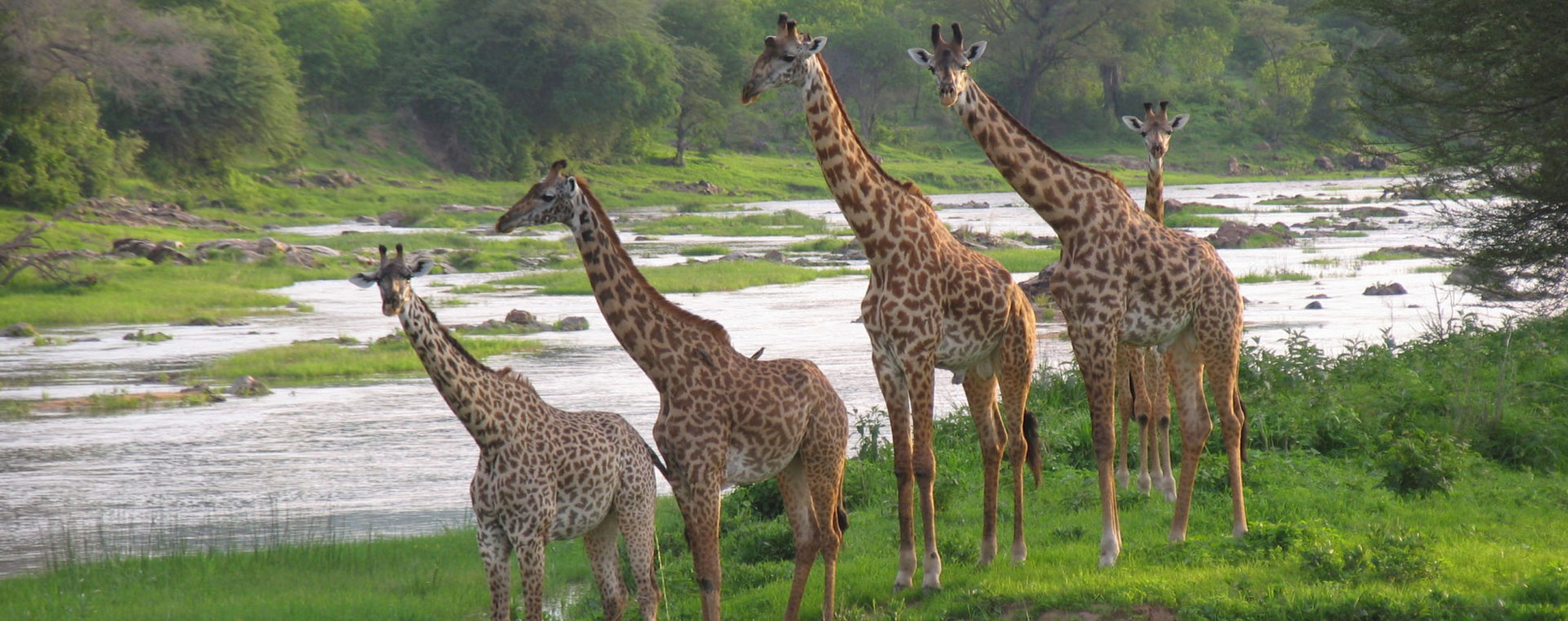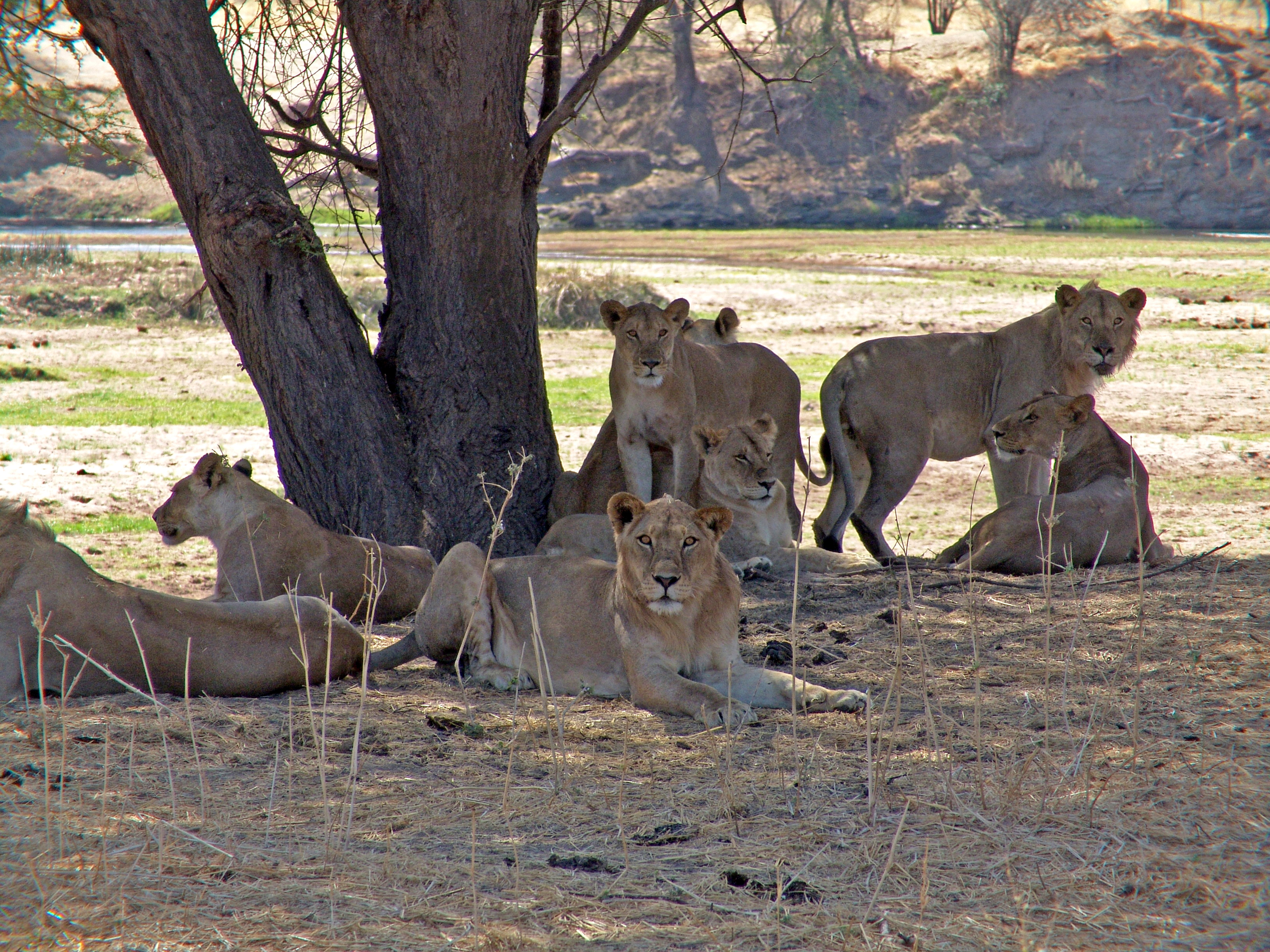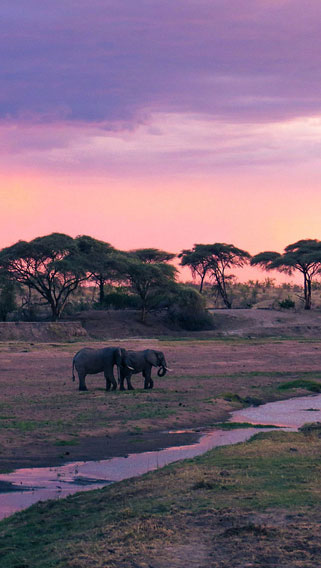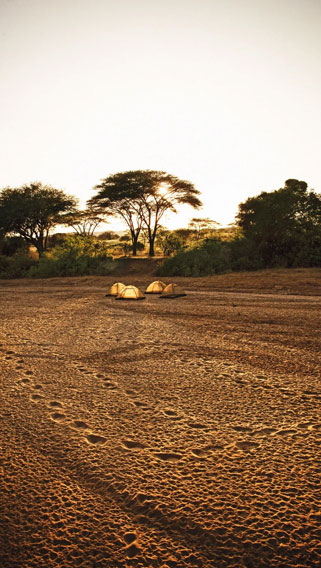
Ruaha National Park was recently expanded and became Tanzania's largest National Park followed by Serengeti, Ruaha National Park is a remote bastion of spectacular wilderness, undisturbed wildlife, and breathtaking scenery. It lies 130 kilometers west of Iringa town. Its name derived from the Great Ruaha River, which flows through it creating spectacular gorges and scenery. Hippos, crocodiles, turtles and fish inhabit the river.
The park is also known for its sable and roan antelopes, and its rich bird life. Photography blinds have been built at strategic places where wildlife congregates.With herds of more than 10,000 elephants, vast concentrations of buffalo, gazelle, and over 400 bird species, Ruaha's limitless wilderness, together with the surrounding game reserves of Rungwa and Kisigo -- stretches over 40,000 square kilometers. Elephants are found in some of the highest concentration in the country, travelling in matriarch-lead herds through ancient grazing lands and seasonal supplies of water.
The Great Ruaha River is the main feature of the park, and meanders through its borders. On its banks, the game viewing is spectacular, whether done by land or by water. Hippos yawn under the midday sun and crocodiles lie lazily along the banks. Fish eagles dive and swoop along the riverbanks, and at night the sound of frogs croaking happily in the reeds extends across the hills and plains.
Boating safaris are starting to gain in popularity, and provide a popular alternative to viewing the area by car. Most of the national park is located on the top of a 900 metres plateau whose ripples of hills, valleys, and plains make the game viewing topography beautifully unique. Small mountains run along the southwest borders of the park and their tree-covered slopes are visible in the distance. During the rainy seasons, dry river beds swell with the biannual deluge and within days, a thin coat of green covers all the land in sight. Because of its rather remote location, Ruaha National Park is largely unexplored.
Because of this, a safari to the national park often has the feel of a private adventure and an unique experience. For the intrepid wilderness lover and the avid safari explorer, a trip to Ruaha National Park is uniquely rewarding and a perfect piece of Africa. The best months for game viewing are July to November, as animals concentrate at water sources. The park can be visited throughout the year, but in March and April some of the roads are not accessible.



Tanzania has two distinct rainy seasons: April to May (the ‘long rains’) and November to December (the ‘short rains’). Generally, the country’s main rainy season (the long rains) produces tropical downpours in the afternoons and many safari camps close. The short rains season sees the occasional brief shower, but safari camps stay open and game viewing is good.
Wildlife Safari, Witness the Wildebeest Migration, Relax on the East African Coast, Cultural Travel on the Island of Zanzibar, Climb Mount Kilimanjaro, Diving and snorkelling,Horse riding,Bike safari,Quadbiking,Chimpanzee trekking
Hello, and welcome! if you have any questions just let me know and we will get back to you ASAP. (Be sure and share your email address just in case we don't get back before you leave our site.)
Diwaka Safaris works with your wish list, or offers obligation-free advice, on personally-curated safaris to fit your schedule, budget and desires.
Find Out MoreWe offer unique safaris in East Africa. Our team of proven professionals offer Family Holidays, Cultural Safaris, Eco Safaris, Bird watching Safaris, Beach Holidays, Honeymoon Holidays, Mountain Climbing and Trekking safaris,Camping safaris, photographic Safaris Groups and incentive tour packages, Car hire, Balloon safaris with a personal touch to meet the needs of each of our esteemed customer.
Vladimír Staňura – USA
We wanted to do safari with my wife in Kenya. Diwaka Safaris organized our trip for 17 days professionally. We were very satisfied with all services. The best part was our guide Patrick Waweru who did an excellent job.
josefkingley – USA
Decided to do one a early Jan before the corona nightmare...wasnt decided on the exact itinerary especially the accommodation to choose...did my own research and decided on the ones I could get though decided they can also advice on what they had in mind so that we could compare prices as well as I could get to check on their diff reviews...was a 4 nights trip just Naivasha where we stayed at Naivasha Sopa and Mara at Ashnil..loved ashnil way better cos of the views as well what we got to see the in terms of wildlife..